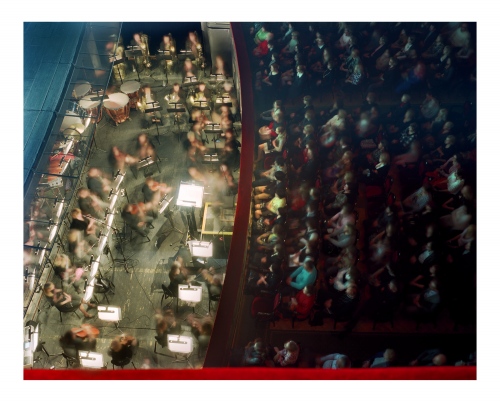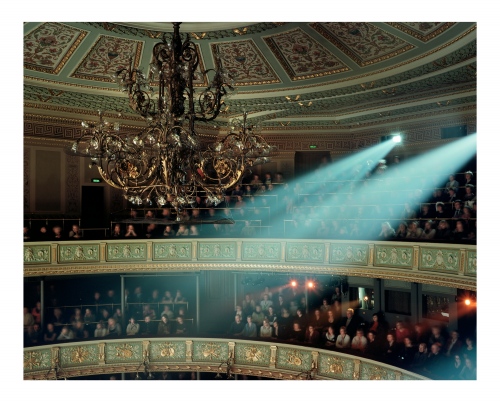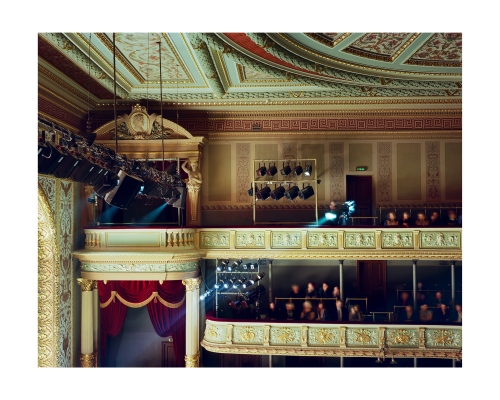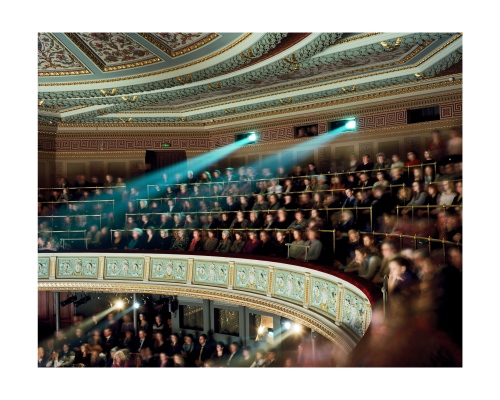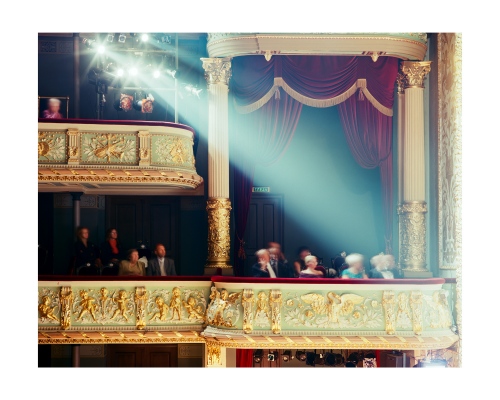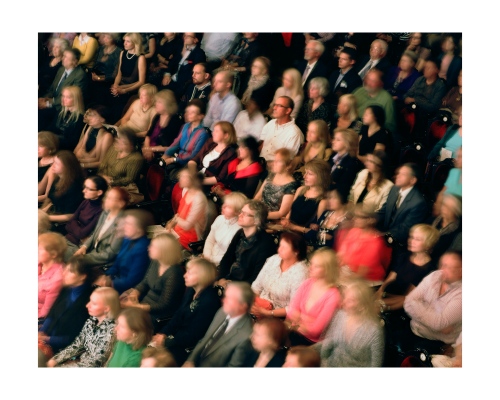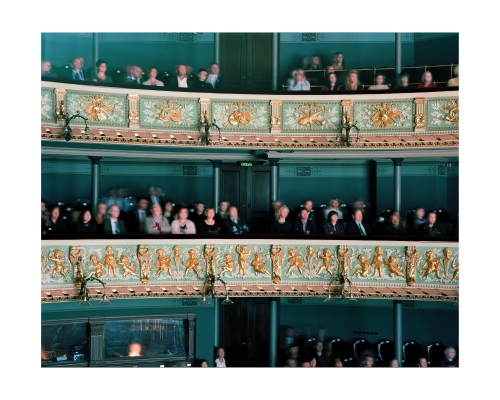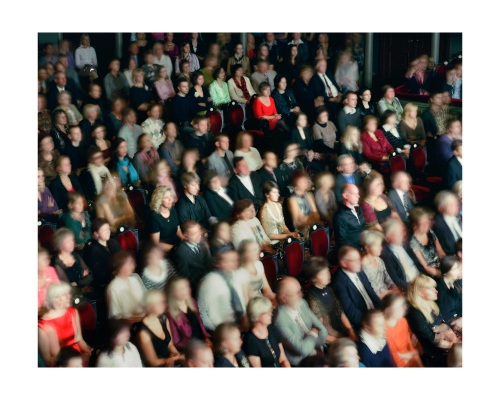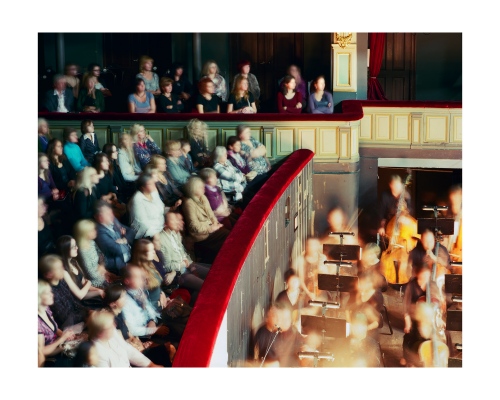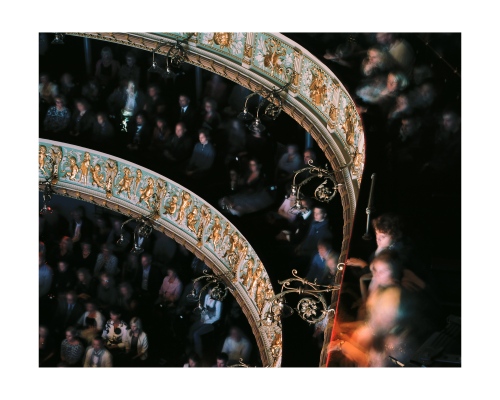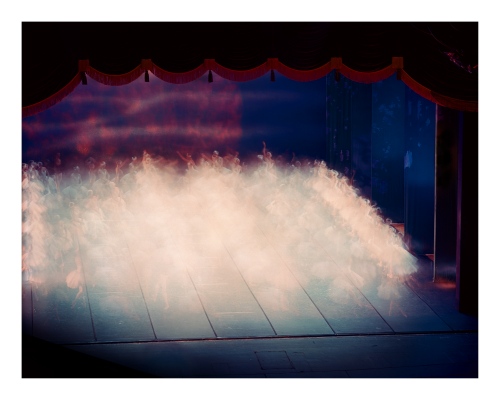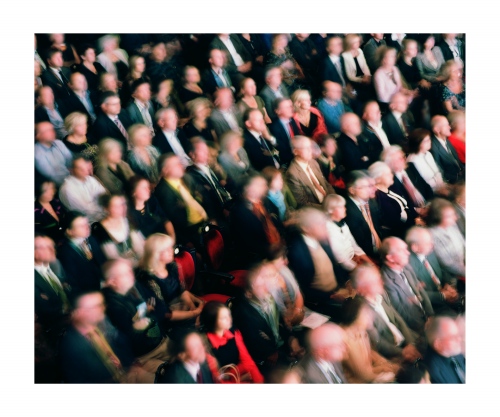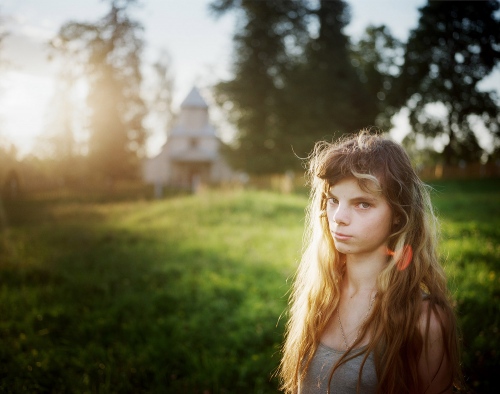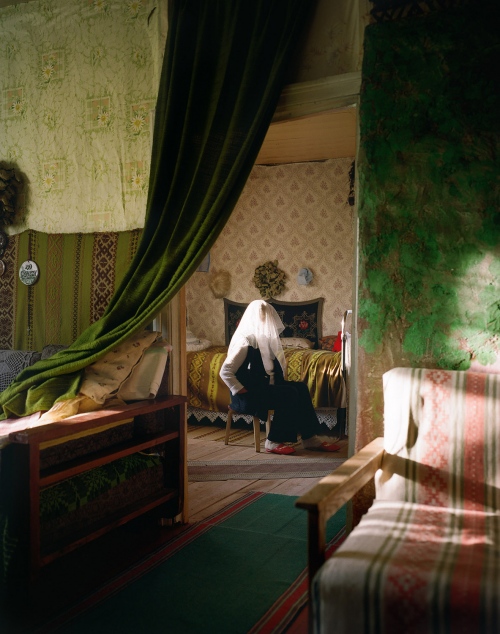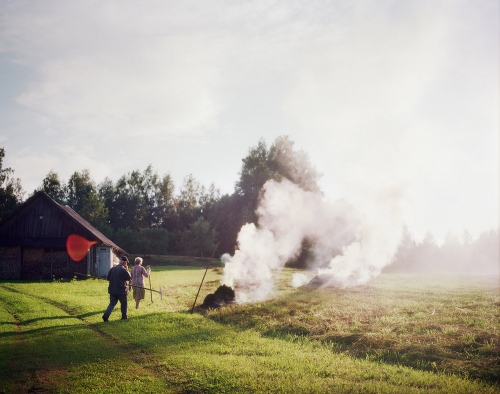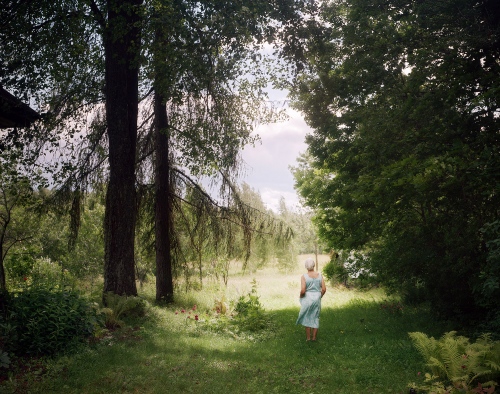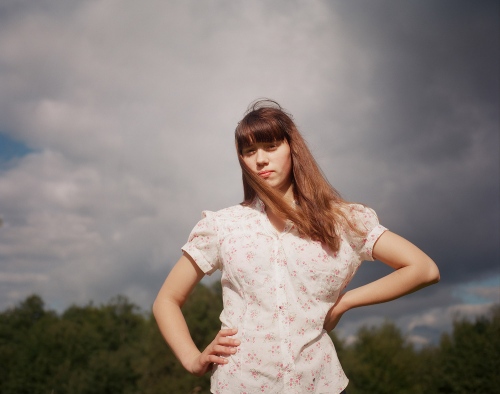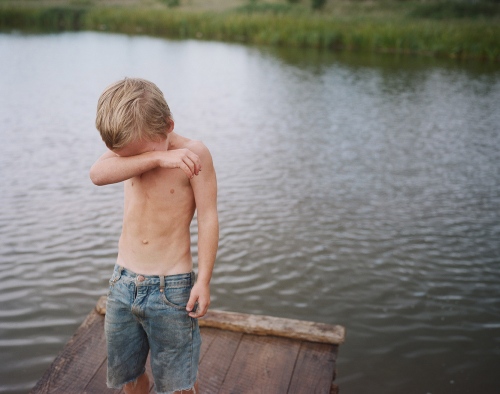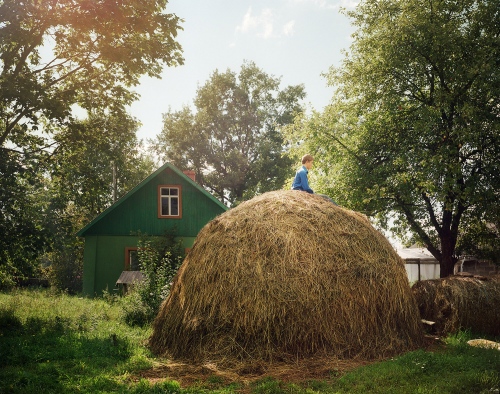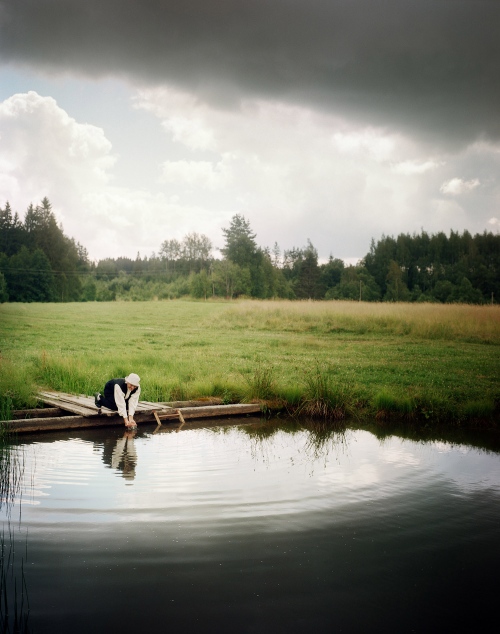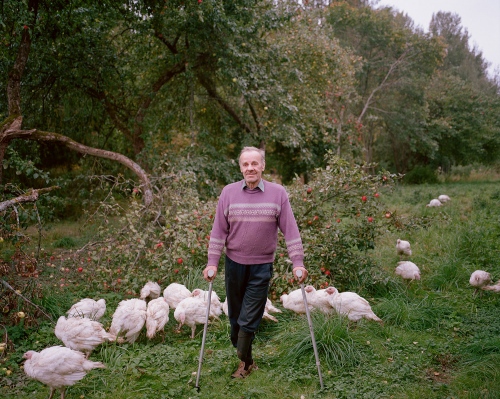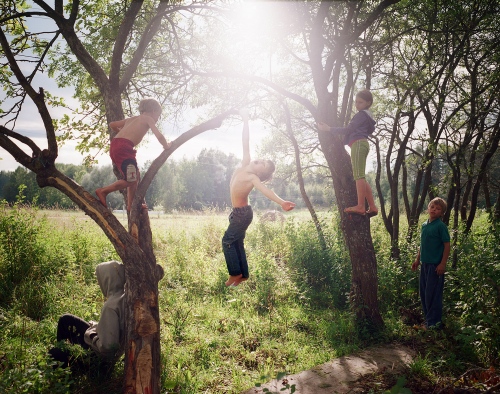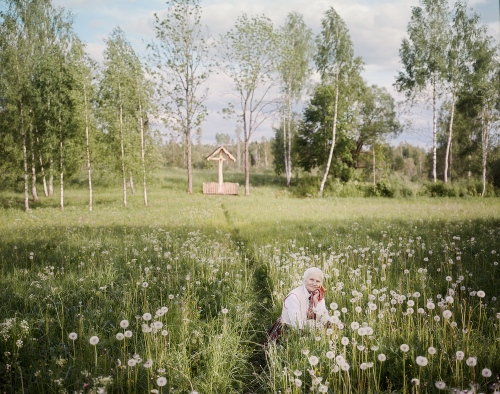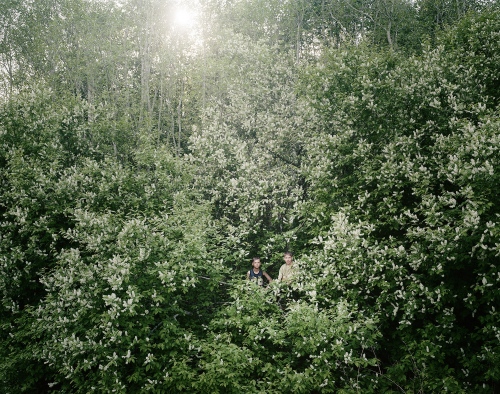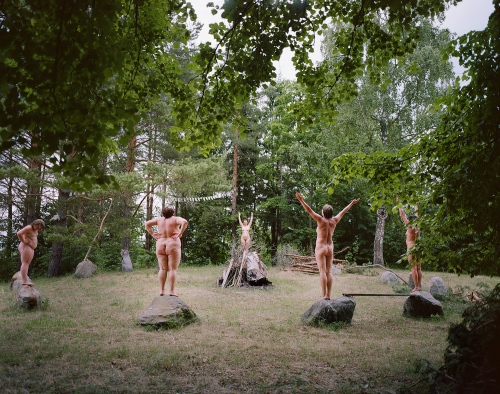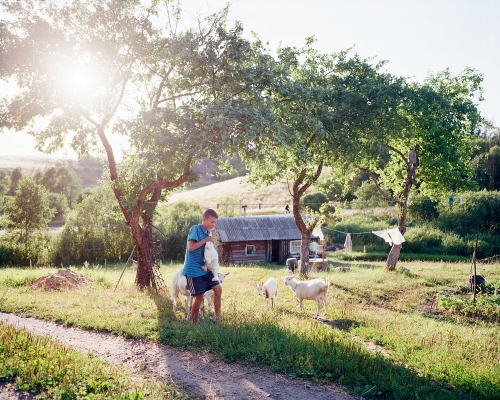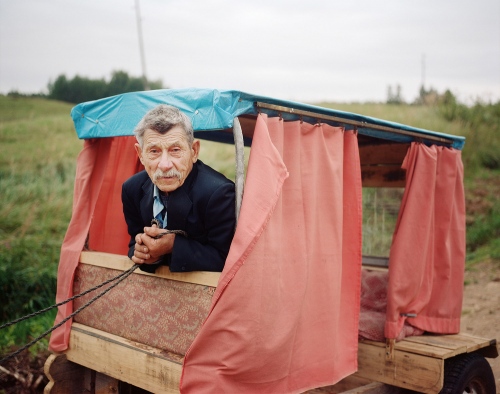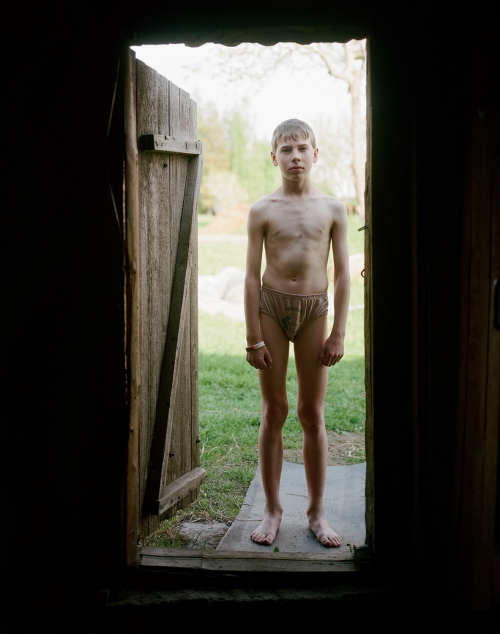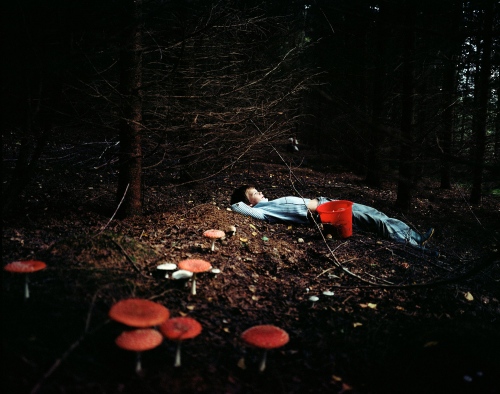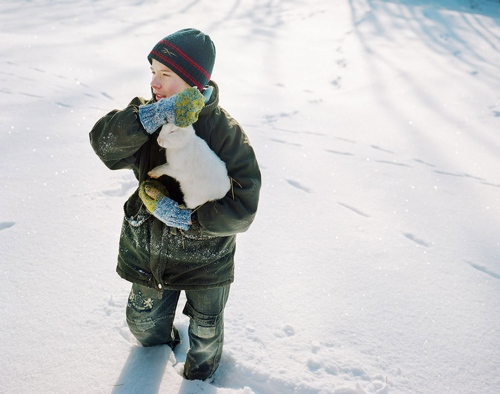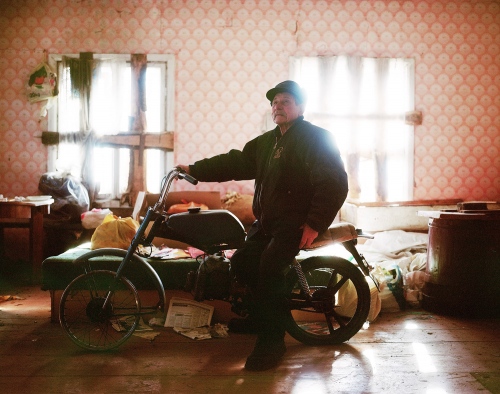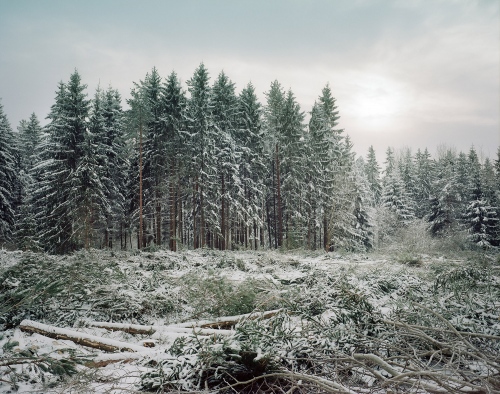OPERA: The Spectacle of Society.
Opera was once seen as the exclusive reserve of aristocracy, a polite social occasion or an event to attend to affirm your cultural capital as a member of a social elite. Iveta Vaivode’s images tell a different story of intense participation by a more heterogeneous audience in a drama unfolding out of the frame. She watches the watchers, much as painters like Edgar Degas or Walter Sickert did at the music hall a hundred years ago. The long exposures she employs render the subject in a high contrast impressionistic way, like Édouard Manet, but instead of Baudelaire’s Flaneurs, Vaivode sees a more stratified contemporary audience. From box to balcony to stalls the make-up of the spectators clearly differs, but the difference from seat to seat is equally enthralling as many people sit virtually stock-still for the entire 45 minutes of the performance & exposure, whilst others move around to the point of visual extinction. Some sit forward in their seats wringing their hands as the narrative grips them, whilst others coolly recline, arms folded.
In one image Vaivode shoots looking down from the balcony on the red velvet curve that separates the orchestra pit from the stalls. The marked contrast either side of the line, one of light activity against dark observation, puts us in mind of Plato’s cave or Debord’s Society of the Spectacle, as those in the dark sit transfixed by the energy of others – passion by proxy. And yet the work is less social critique than affective visual feast as the audience is drawn into the play.
Jim Campbell
Senior Lecturer: Visual Culture and Photography
Somewhere on disappearing path
In 2012, Iveta Vaivode(1979) went to her grandmother Antoņina’s village, Pilcene, in the Latgale region of Latvia. She was searching for the mythical place she imagined when looking through photographs of her grandmother’s youth. “For the most part, our lives aren’t connected anymore to one special place, a physical strip of land or old house our grandparents built. The ability to travel from one side of the world to the other, dynamically changing places of residence, and often travelling virtually as well as physically, has made our identities both more blurred and more unified. Getting to know the people of Pilcene, I had an odd feeling. Although they were strangers to me, I recognized something very familiar, but forgotten in them – the women of my family. Especially when Anna quietly asked me to listen to the singing of the bees in the evening, or told endlessly long stories of her past. Walking around Pilcene and the nearby villages, I could return to my own childhood and that of my mother – where every person has their own smell and fresh milk is always tasted still warm.”
Vaivode’s work addresses the idea of looking back as a framing device and a narrative mode. Searching for the
last traces of her family, she seeks out the people who used to know her grandmother. Through their stories, the photographer discovered a vanished world. Many of the people she meets live in a peculiar past, in memories that are inevitably approaching a point beyond which is only forgetting.
